Hypocenter: the point directly beneath an atomic explosion, the spot that is exposed to the center of the bomb’s destructive force, often called Ground zero.
In Nagasaki that precise point is marked by a cenotaph in the center of concentric circles.
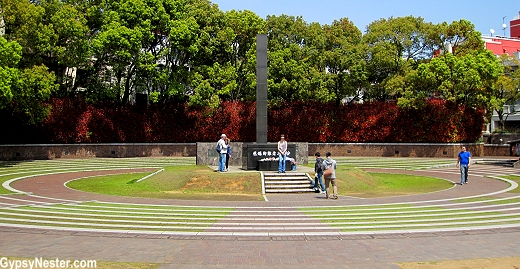
The monument’s empty tomb stands in honor of those who were never found. Physically being in this place brought us to an emotional state that is impossible to describe.
Nearby, a scorched vestige of a wall from the Urakami Cathedral stands as a stark remembrance of the devastating blast.
This was once the largest Catholic church in The Far East, but stood just a few hundred feet from the center of the explosion.
See the rebuilt cathedral and the eerie statues that somehow survived the bomb.
Just below the wall remnants, along the river, a window is cut into the bank.
Peering in we saw the moment of impact preserved, the ground as it appeared immediately after the detonation… strewn with crushed brick, scorched rock, and melted glass.
As an inspiration for prayer and reflection, a stone lantern from the Shotokuhi Temple that had been located a mile away from the hypocenter was brought to the park.
It was the only part of the temple to survive the devastation.
A photo is displayed showing the destruction at the temple.
More about beautiful, peaceful Nagasaki
In another shrine, paper cranes have been hung in strands of one thousand each, offered by individuals wishing for peace.
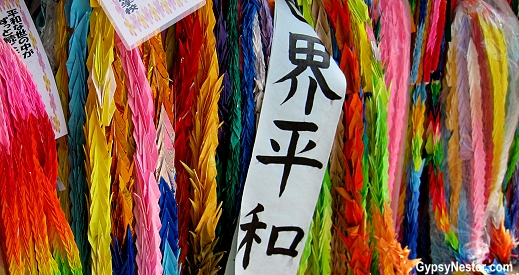
Spring was in full bloom and the cherry blossoms were reaching their peak.
It would be a remarkable sight anywhere but made even more remarkable in Nagasaki.
Many scientists had predicted that no vegetation would grow on this ground for seventy-five years because of the radioactive fallout.
See more about the significance of the cherry blossoms in Japan
Despite the horrific history of this spot, our feelings were directed toward peace and remembrance.
The site is incredibly solemn, yet very beautiful.
On our way out of what is now called the Zone of Prayers, we came upon an elderly lady creating wonderful rose blossoms out of what we thought was ice cream.
It turned out to be a subtly flavored ice, fittingly made with rosewater.
WATCH: A work of art in seconds!
We sat and enjoyed our cones for a few minutes before heading up to what we knew would be an emotionally draining visit to The Atomic Bomb Museum.
The Clocks Forever Stopped at 11:02

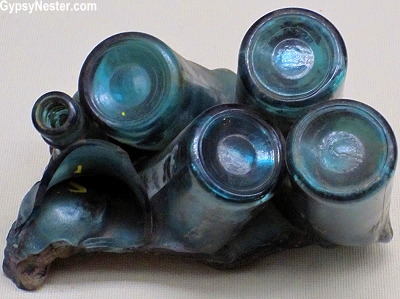
The museum details Nagasaki before, during, and after the blast, as well as the history of the development and deployment of the bomb.
Entering into the first room,we found a depiction of life in the city just before the attack.
It was a normal morning, and there was no warning whatsoever, no air raid sirens sounded, and no one made it into any of the numerous shelters.
We continued into a huge, darkened room showing the aftermath of the explosion. As our eyes adjusted we began to see the items clearly, a twisted water tower, a replica of the collapsed cathedral, and photographs of the destruction.
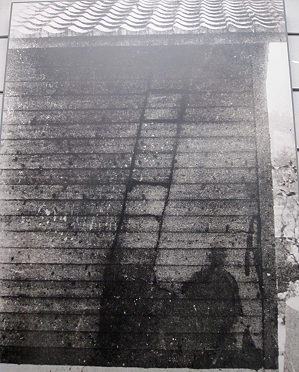
The impact of the display captured our attention; it was almost like walking back in time through the ruins. We found it hard to breathe normally.
The main hall of the museum contained artifacts left from the devastation, stopped clocks, melted glass, charred human bone. Striking first-hand accounts from survivors.
An eerie photo entitled Silhouette of a Lookout and his Ladder Remain on a Wall was taken about three miles from the hypocenter after tar exposed directly to the flash of the bomb burned.
The tar disappeared, but the shadows remained on the Nagasaki Fortress Headquarters.
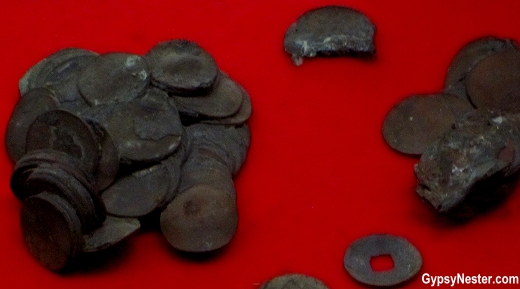

A good deal of attention is given to the development of atomic weapons.
Displays cover the entire process, including a full-size model of “Fat Man” as the Nagasaki bomb was known.
Numerous statements from scientists warn of the consequences of nuclear weapons, but the museum offers no opinions on the politics or reasons for the war, only facts about the bombing.
After considering it all, the museum and the Zone of Prayers struck us as powerful tributes that convey the message of hope that these weapons are never used again.
We also hope so with all of our hearts.
David & Veronica, GypsyNester.com
More about beautiful, peaceful Nagasaki
Delve Deeper into Nagasaki:
The Peace Garden
The Statues of the Urakami Cathedral
Cherry Blossoms in Japan
Video – How to make a rosewater ice bloom
This post may contain sponsored links.



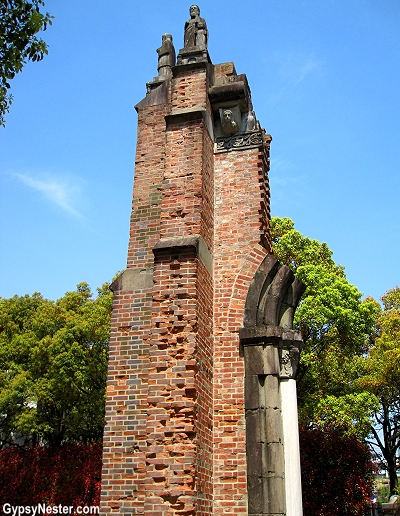
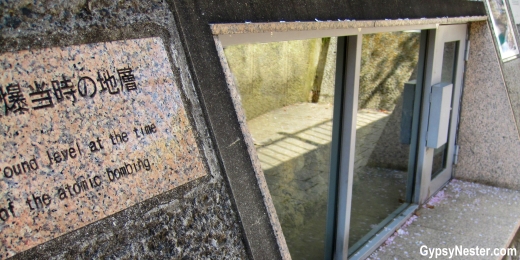
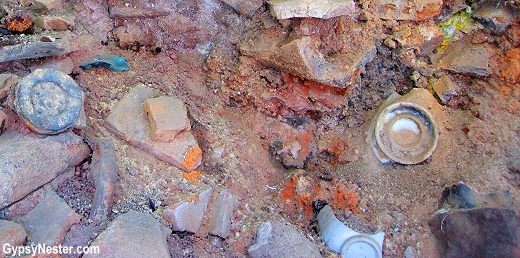

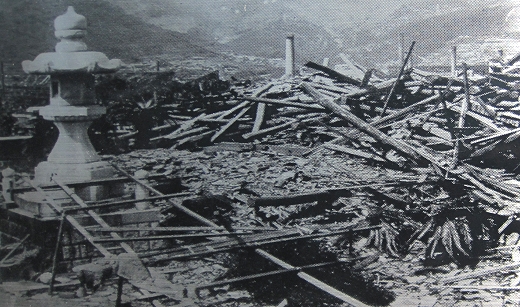

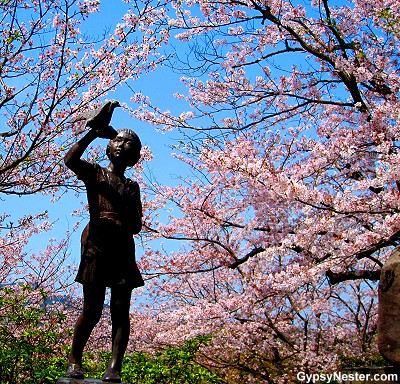
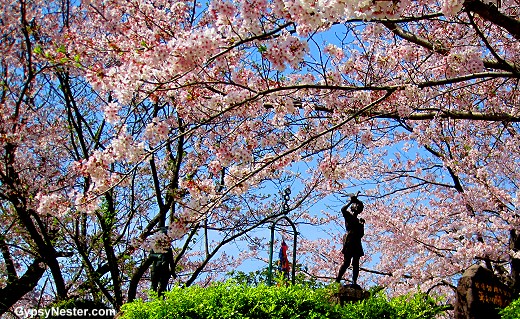
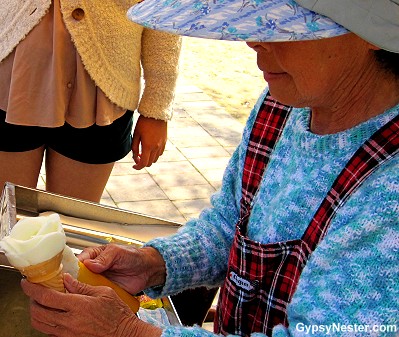


Hi there! Such a nice article, thanks!
This was really thoughtful. It sounds like it was a moving experience for you. It was nice to stumble across this post- it really brought my experience back for me. I visited in 2006 while I was a part of the crew of a U.S. Navy destroyer.
I decided to get out of the military after visiting Nagasaki.
I’m really impressed with your writing skills as well as with the layout on your weblog.
Is this a paid theme or did you modify it yourself?
Either way keep up the nice quality writing, it is rare to see a nice blog like
this one today.